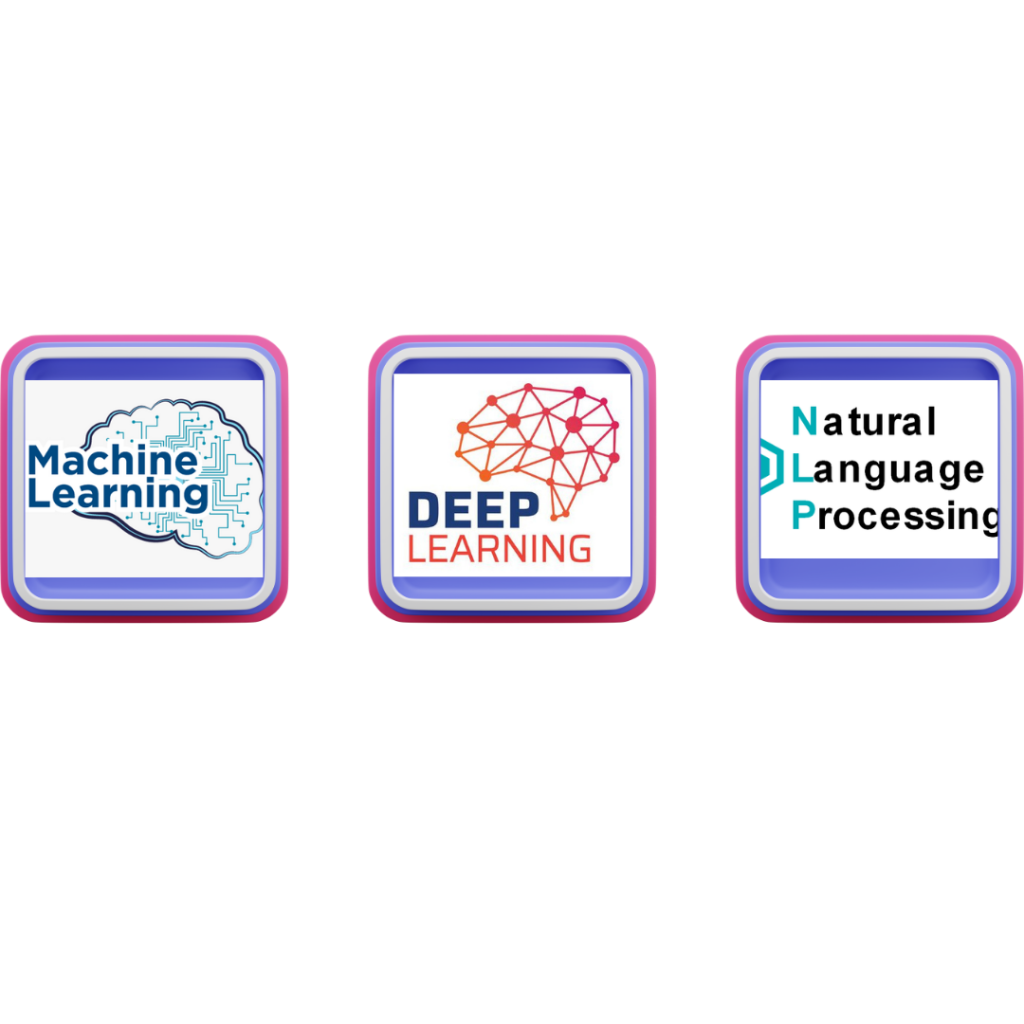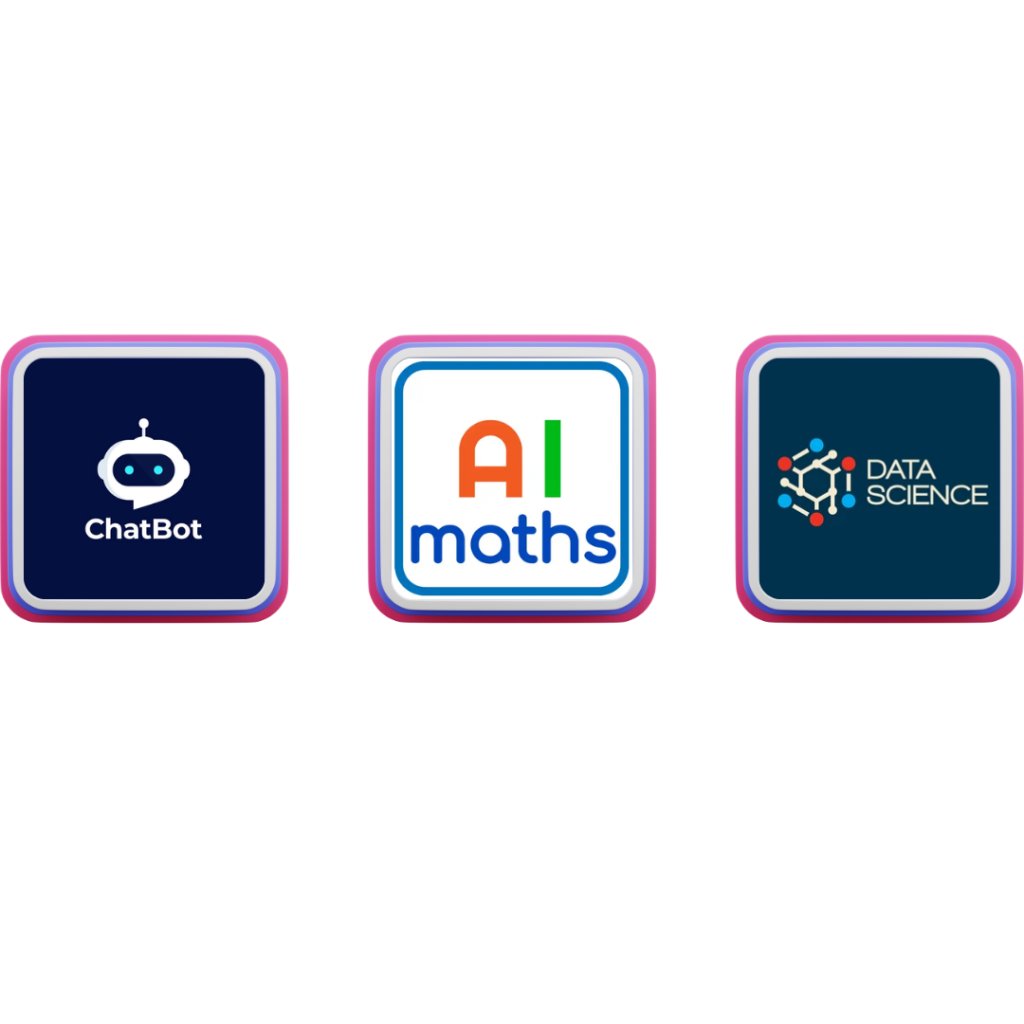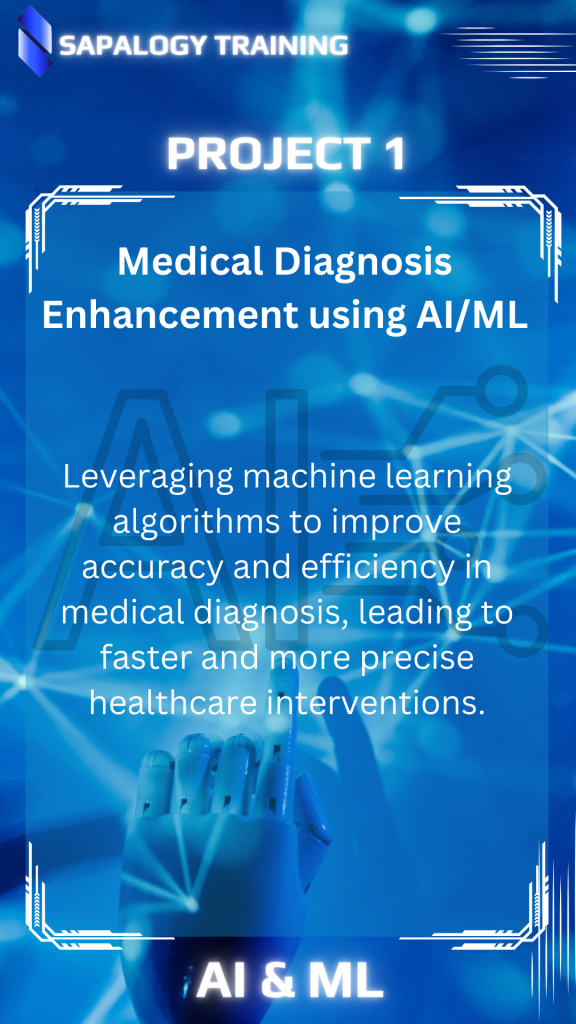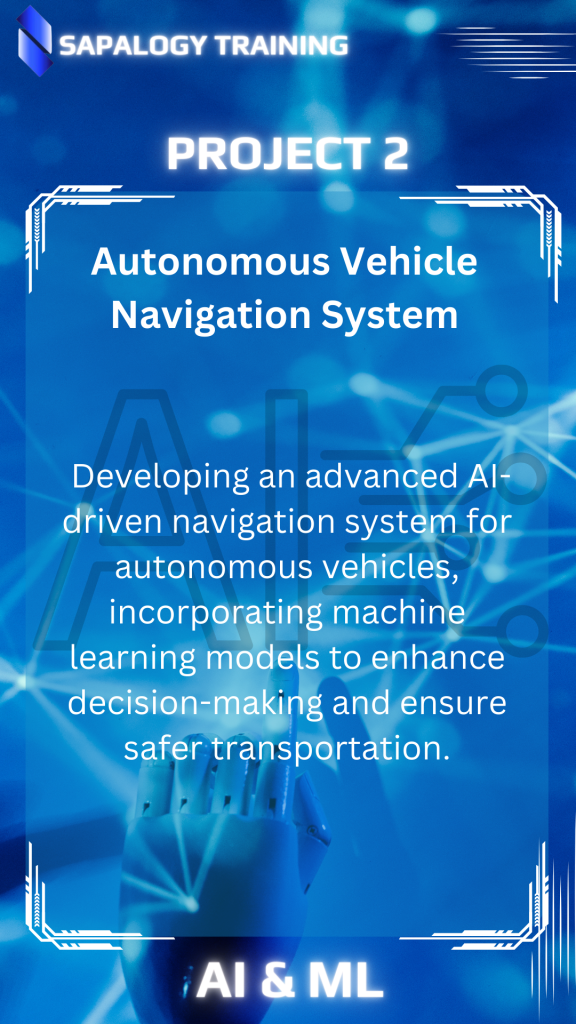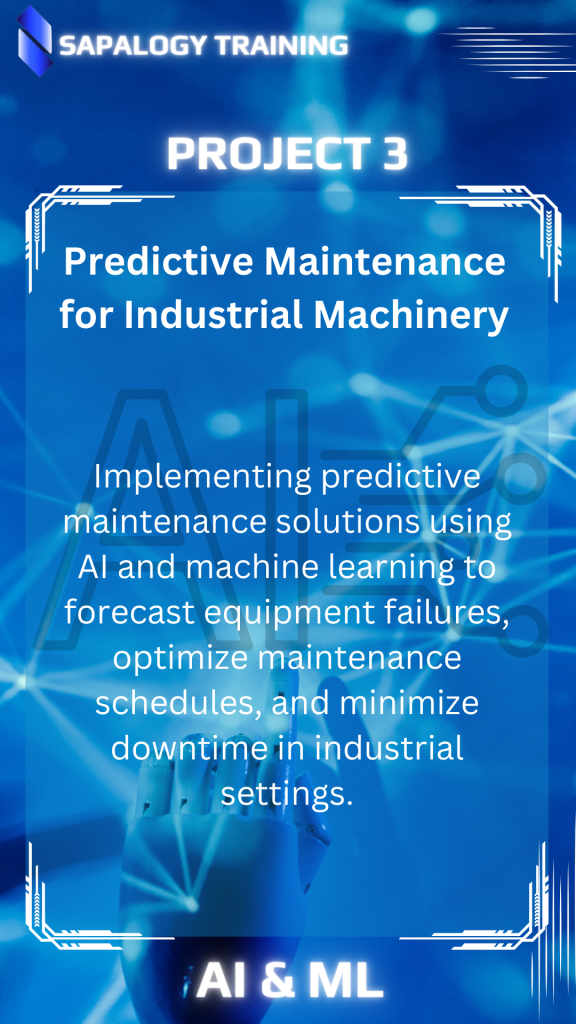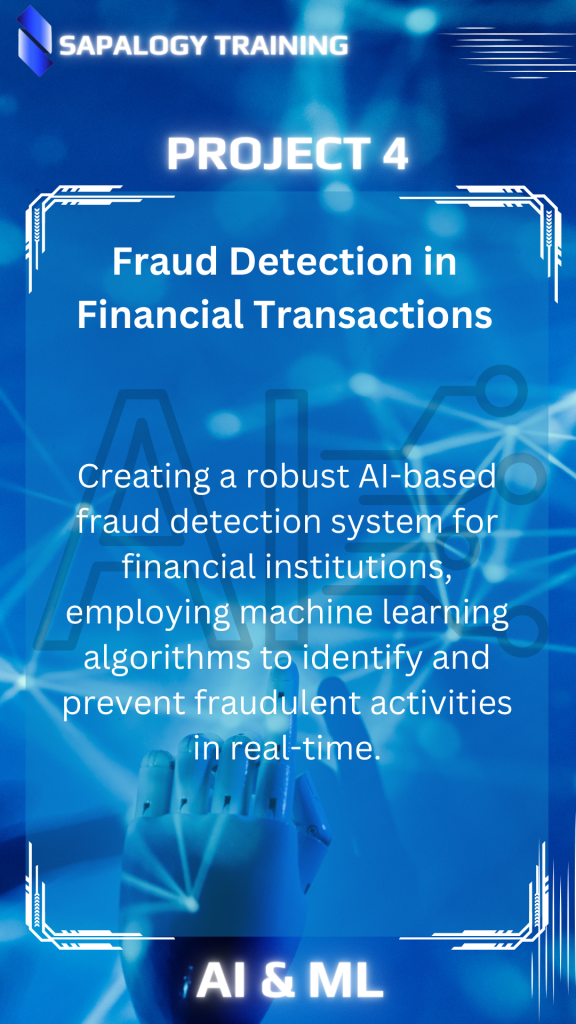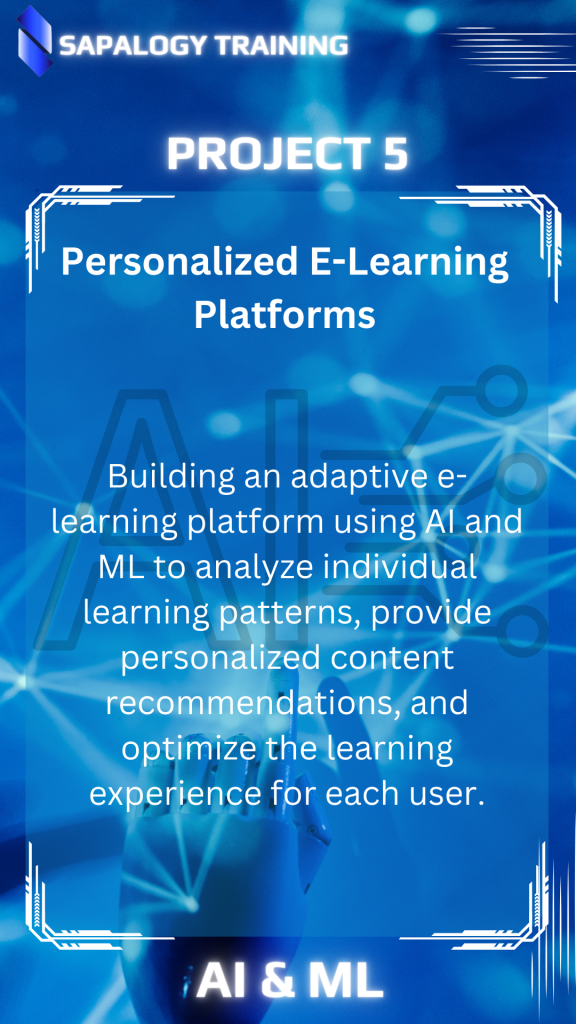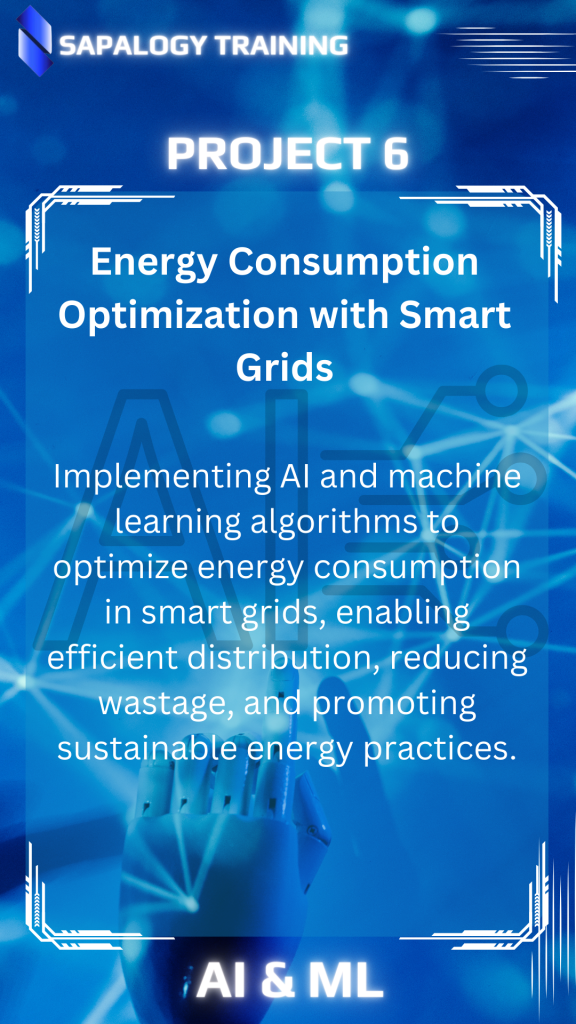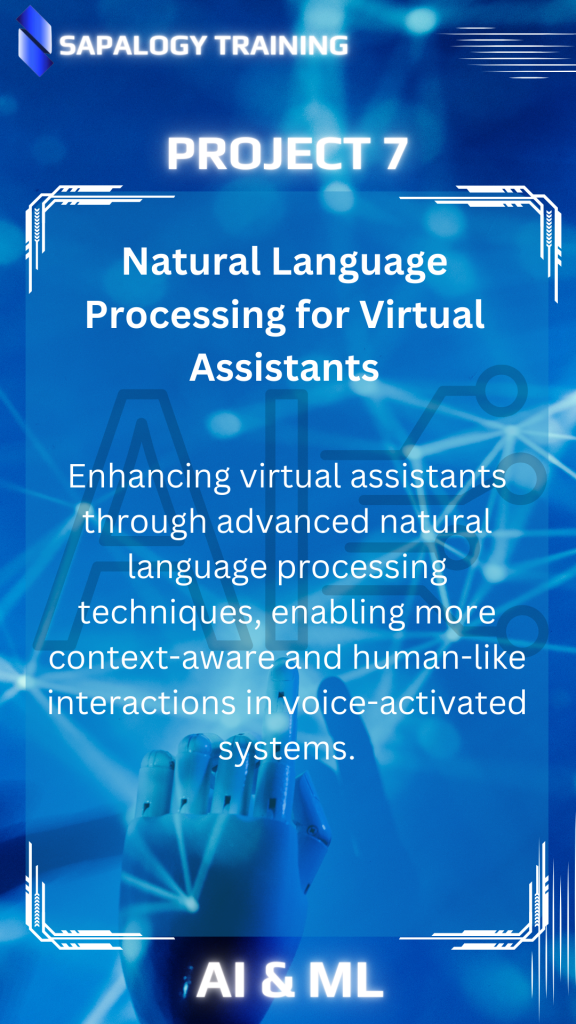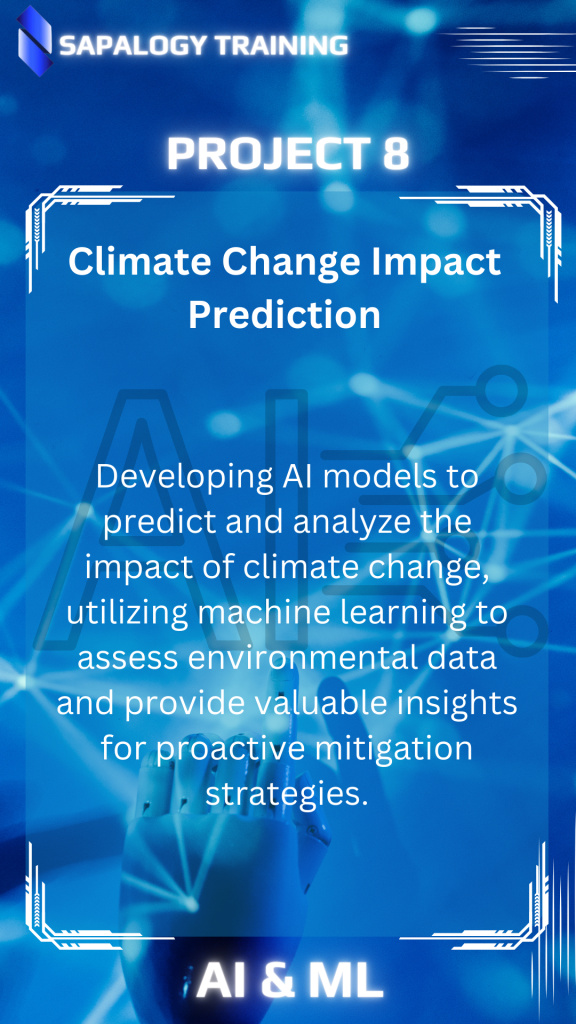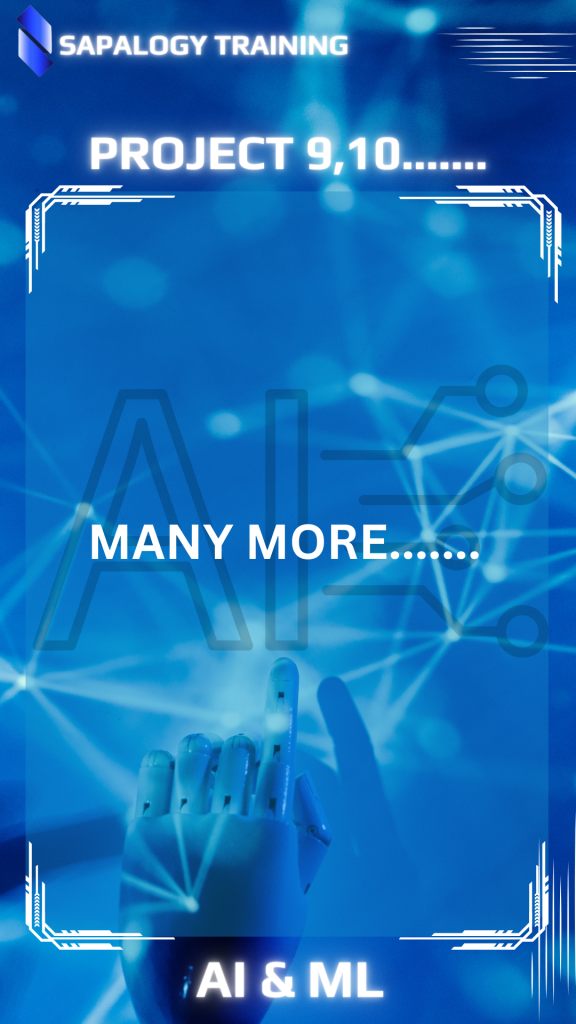Best AI & ML Training
Best AI & ML Training by Sapalogy training offers you the best AI & ML training in nagpur for freshers and experience candidate in nagpur, with expert guidance and 100% guaranteed placement assistance. Our AI & ML training course covers every technical topics in details and the student is left with real-time hand on experience.
Our practical, Job-oriented training program will not only provide you with a certificate but also with knowledge equivalent to around 2+ years of field experience. We value your time as much as over. Hence we invented to train you in AI & ML in just 7 months.
All the topics will be covered in detail and also include.
- Resume preparation
- Interview practice
- 6 month internship
- with 100 % job opportunities guaranteed program.
Contact us now!
What is AI & ML?
- AI (Artificial Intelligence) is a branch of pc technological know-how focused on growing machines capable of sensible conduct.
- ML (Machine Learning) is a subset of AI that involves education algorithms to study styles from statistics and make predictions or decisions.
- ML algorithms enhance overall performance over the years via learning from revel in and adapting to new facts.
- Supervised mastering entails schooling ML models on classified information, while unsupervised studying discovers styles in unlabeled records.
- AI and ML packages span various industries, inclusive of healthcare, finance, and robotics, riding innovation and automation.
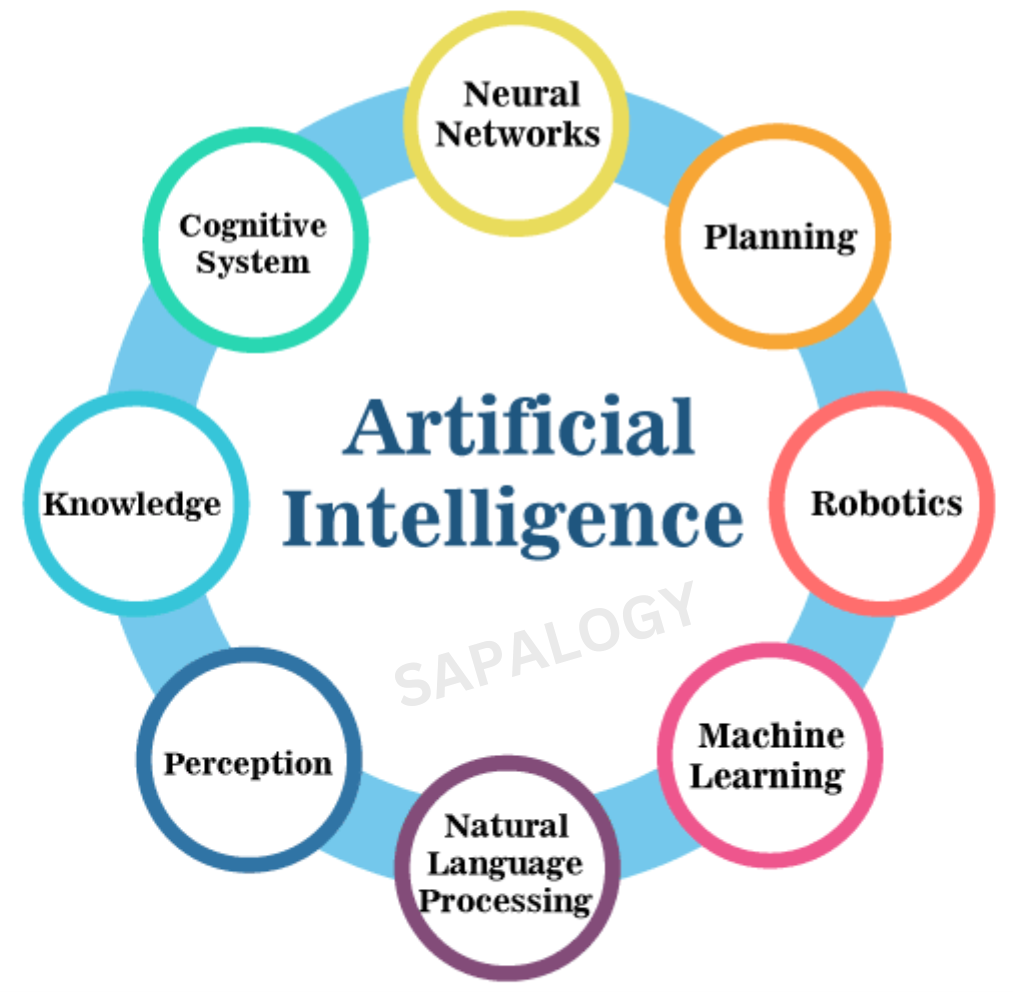
- AI is the overarching area aiming to create wise machines, device getting to know is a subset the usage of algorithms to enable systems to study from records, and deep gaining knowledge of is a selected ML approach employing neural networks with multiple layers for elaborate sample reputation.
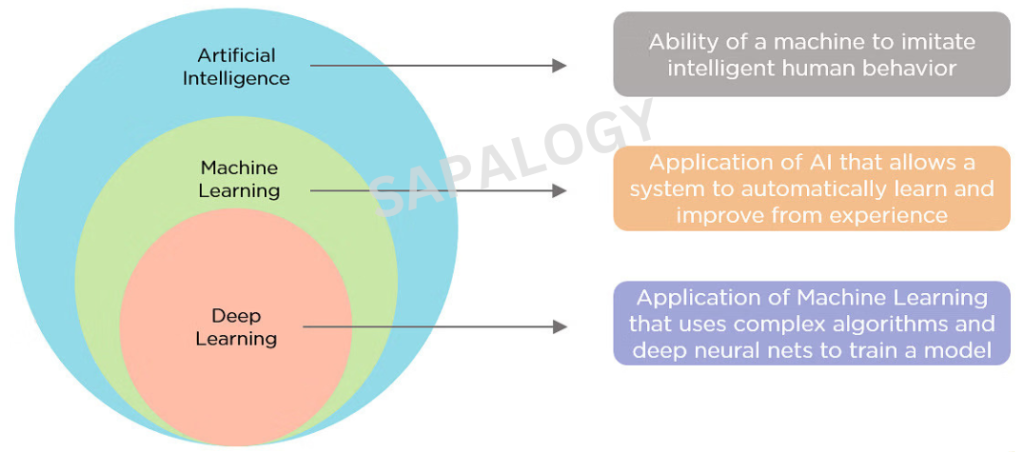
- AI encompasses diverse branches including machine learning, herbal language processing, pc imaginative and prescient, and robotics, using advancements in various domain names.
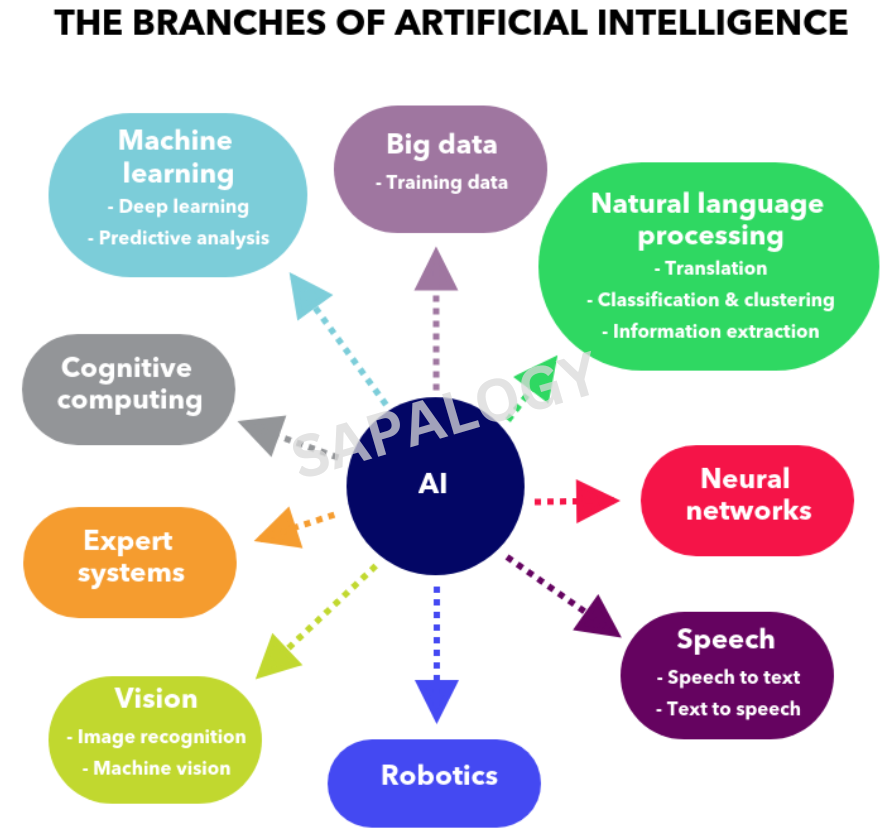
- Sapalogy taining provides AI & ML training in offline and online mode. Starting with real time AI & ML project based training.
- IT background, non IT background, freshers, experience can start their career in AI & ML irrespective of their background.
- Sapalogy is the best training institute in nagpur with the 100% job opportunities.
Enquire now
Roadmap to learn AI & ML with Sapalogy
1. Introduction
- What is AI & ML?
- AI & ML course
- AI & ML certification
- AI & ML jobs in india
- AI & ML jobs in nagpur
2. Foundational Skills
- Math: Linear algebra, calculus, probability & statistics are crucial for understanding algorithms and analyzing data.
- Programming: Python is the go-to language. Learn about datastructures, algorithms, and object-oriented programming. Explore libraries like NumPy, Pandas, Matplotlib.
- Databases: Get familiar with SQL for querying and manipulating relational databases.
3. Data Science Core
- Machine Learning: Supervised (regression, classification) and unsupervised (clustering, dimensionality reduction) learning algorithms.
- Statistics & Hypothesis testing: Understand statistical testing, p-values, and confidence intervals.
- Data Wrangling & Cleaning: Learn data manipulation techniques with Pandas and data cleaning practices.
- Data Visualization: Effectively communicate insights using libraries like Matplotlib, Seaborn, Tableau.
4. Deepening the Knowledge
- Advanced ML Algorithms: Ensemble methods, boosting, time series analysis, deep learning (neural networks, CNNs).
- Domain Knowledge: Choose a specific domain (finance, healthcare, etc.) to gain industry-specific knowledge and problem-solving skills.
- Big Data Technologies: Explore Apache Spark, Hadoop for handling large datasets.
- Cloud Computing: Familiarize yourself with cloud platforms like AWS, Azure, Google Cloud Platform for data storage and computing.
5.Specialization & Projects
- Specialization: Pick a niche area (e.g., NLP, computer vision, recommender systems) and dive deeper.
- Portfolio Building: Work on real-world projects to showcase your skills and understanding. Contribute to open-source projects.
- Communication & Collaboration: Hone your communication skills to explain complex technical concepts effectively. Learn to collaborate effectively in teams.
6. Feedback Loop and Iteration
- Establish a feedback loop for continuous improvement based on user feedback and evolving business needs.
- Iteratively update models and algorithms to adapt to changing conditions.
7. Cost Analysis and ROI Measurement
- Conduct cost analysis for AI and ML implementation, including infrastructure, training, and maintenance.
- Measure the return on investment (ROI) based on improved efficiency, cost savings, and other business metrics.
8. Resume preparation
- Include keywords.
- How to prepare resume.
- How to prepare resume for freshers.
- Show impact.
- Include soft skills.
- Be unique.
Key features of AI & ML Training
AI & ML Training syllabus
Contact to know more!
Skills covered by Sapalogy
Upcoming batch schedule for AI & ML Training
Sapalogy provides flexible timings to all our students. Here is the AI & ML Training Class Schedule in our branches. If this schedule doesn’t match please let us know. We will try to arrange appropriate timings based on your flexible timings.
| Course | Batch time | Offline | Online | Enquire now |
|---|---|---|---|---|
| AI & ML | Starts every week | Nagpur | India | Enquire now |
| Machine learning | Starts every week | Nagpur | India | Enquire now |
| Data science | Starts every week | Nagpur | India | Enquire now |
Can’t find a batch you are looking for
AI & ML CERTIFICATION
- Sapalogy training certification will serve as proof that the courses were completed by Sapalogy.
- The AI & ML certification offered by Sapalogy will equip you with valuable skills, enhancing your competitiveness in the job market.
- Sapalogy provides comprehensive guidance for your AI & ML global certification, ensuring a 100% passing guarantee in examinations such as AI & ML Certification, AI & ML Platform Development Certification, and various other global exams.

Projects
Training courses reviews
Our course review







